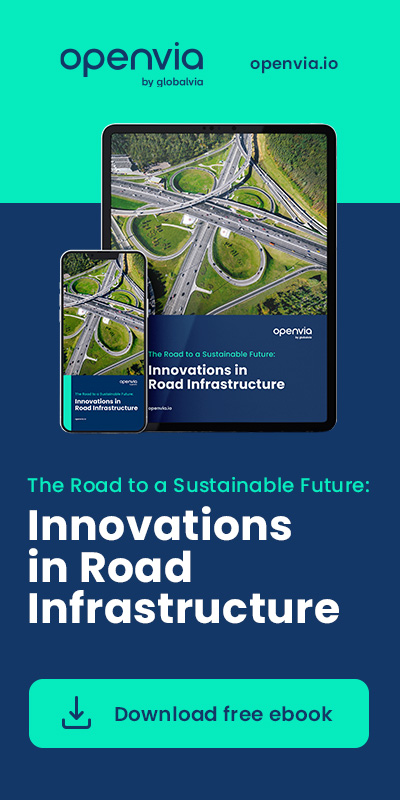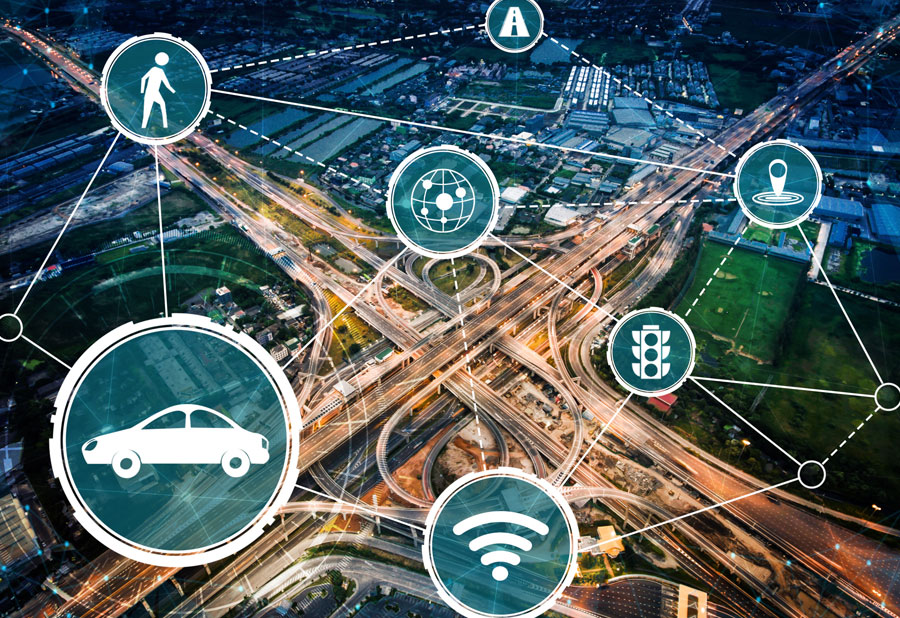Introduction: The Impact of Cloud Computing on Mobility Infrastructure
Cloud computing services have revolutionized various industries, and the mobility infrastructure sector is undergoing a significant transformation due to their adoption. With the increasing complexity of road networks, growing urban populations, and the need for sustainable and efficient transportation solutions, integrating cloud-based technologies has become essential.
Traditional road management systems often face challenges such as inefficiencies in traffic monitoring, delays in infrastructure maintenance, and difficulties in processing vast amounts of data. However, the emergence of on-cloud platforms has enabled road operators to optimize processes, enhance safety, and provide more sustainable solutions. By leveraging infrastructure management services and process digitalization, cloud computing is reshaping how transportation networks are monitored, maintained, and improved.
According to a FutureBridge report on cloud computing in mobility, the shift towards cloud-based solutions is driven by the need for cost efficiency, improved data accessibility, and enhanced operational capabilities. This transition is paving the way for smarter road management, predictive maintenance, and real-time traffic control, ensuring that mobility infrastructure can meet the demands of modern cities.
Operational Advantages of Cloud-Based Platforms in Road Management
The adoption of cloud computing services provides numerous operational benefits in the management of mobility infrastructure. These advantages go beyond data storage and computing power, extending into automation, scalability, and real-time processing.
1. Real-Time Monitoring and Traffic Management
Cloud-based traffic management systems provide operators with real-time monitoring capabilities. Road networks generate enormous amounts of data from traffic cameras, GPS tracking, and IoT sensors. Cloud-based platforms aggregate and analyze this data, allowing for faster decision-making.
For example, traffic congestion can be alleviated by integrating AI-driven algorithms that predict and manage traffic flow, adjusting traffic signals dynamically. This reduces delays, minimizes fuel consumption, and improves overall road safety.
2. Predictive Maintenance and Cost Reduction
Traditional infrastructure maintenance is often reactive, leading to costly emergency repairs and increased downtime. Cloud-based predictive maintenance enables road operators to anticipate infrastructure failures before they occur.
By leveraging on-cloud platforms to store and analyze historical data, AI models can detect patterns that indicate potential issues, such as road surface deterioration, bridge stress, or equipment malfunctions. This preemptive approach leads to:
- Lower maintenance costs
- Fewer road closures and disruptions
- Longer infrastructure lifespan
According to a study published in ScienceDirect, cloud-based predictive maintenance significantly improves operational efficiency by reducing maintenance-related costs by up to 30% and extending infrastructure longevity.
3. Scalability and Flexibility
Cloud computing solutions provide the scalability needed to handle fluctuations in traffic volume and operational demands. Unlike traditional IT infrastructure, which require significant upfront investments, cloud-based platforms allow operators to scale resources dynamically.
For example, during peak travel seasons, such as holidays or special events, road operators can allocate additional computational resources to manage increased data loads. This pay-as-you-go model optimizes cost efficiency while ensuring seamless performance.
4. Data Integration and Decision-Making
Cloud platforms enable the integration of data from multiple sources, including:
- Smart traffic systems
- Road sensors and IoT devices
- Weather monitoring stations
- Public transport networks
By centralizing this information in a single cloud-based ecosystem, decision-makers can gain a holistic view of road conditions, traffic patterns, and infrastructure performance. This allows for data-driven policymaking, improving long-term planning and investment strategies.
Technological Trends Driving Digital Transformation in Mobility
Several emerging technologies are accelerating the digital transformation of mobility infrastructure, making cloud computing services even more impactful.
1. Internet of Things (IoT) and Connected Vehicles
The Internet of Things (IoT) plays a critical role in modern road infrastructure. IoT sensors embedded in roads, traffic lights, and vehicles generate continuous streams of data, which are processed on cloud platforms. This technology enables:
- Smart traffic lights that adjust in real-time based on congestion levels
- Vehicle-to-infrastructure (V2I) communication for safer and more efficient driving
- Environmental monitoring to measure air pollution and optimize urban mobility policies
2. Artificial Intelligence (AI) and Machine Learning
AI-powered cloud computing solutions help process massive amounts of traffic and infrastructure data. Key applications include:
- Accident prediction models that identify high-risk areas and suggest preventive measures
- Automated incident detection using AI-driven video analysis
- Traffic flow optimization through adaptive algorithms
According to Digital Strategy EU, AI-enhanced cloud platforms have the potential to reduce urban congestion by up to 25%, significantly improving daily commuting experiences.
3. Edge Computing for Faster Decision-Making
While cloud computing provides immense computational power, edge computing enhances response times by processing data closer to its source. In mobility infrastructure, this is crucial for applications that require immediate action, such as:
- Automated tolling systems
- Real-time accident detection and emergency response
- Dynamic lane management
Edge computing reduces latency, ensuring that road operators can act swiftly to prevent accidents or manage sudden traffic changes.
4. Digital Twins for Infrastructure Optimization
A Digital Twin is a virtual replica of physical infrastructure, such as roads, tunnels, and bridges. By combining real-time sensor data with cloud computing and AI simulations, road operators can:
- Test different traffic scenarios and infrastructure upgrades before implementation
- Predict infrastructure wear and tear based on usage patterns
- Optimize resource allocation for repairs and expansions
This proactive approach to infrastructure management reduces costs and enhances sustainability.
Future of Mobility Infrastructure in the Digital Era
The transition towards cloud-based mobility platforms is set to accelerate in the coming years, driven by advancements in digitalization, automation, and connectivity. Several key trends are shaping the future of mobility infrastructure:
1. Autonomous Vehicles and Smart Roads
With the rise of autonomous vehicles, cloud computing will play a crucial role in supporting Vehicle-to-Everything (V2X) communication. Smart roads equipped with cloud-connected sensors will interact dynamically with self-driving cars, ensuring smoother and safer transportation.
2. Sustainability and Green Mobility
Cloud computing enhances sustainable mobility initiatives by optimizing traffic flows and reducing carbon footprints. Real-time data analysis enables policymakers to implement:
- Eco-friendly traffic regulations
- Electric vehicle (EV) charging infrastructure planning
- Smart public transportation integration
3. Government and Private Sector Collaboration
Governments and private entities must work together to create cloud-based road management frameworks. Private and public organizations like Openvia and European Commission are already investing in cloud-based digitalization projects to enhance road safety, optimize infrastructure maintenance, and reduce operational costs.
4. Integration with 5G Networks
The expansion of 5G networks will further enhance cloud computing capabilities in mobility infrastructure. Ultra-fast connectivity will enable:
- Instantaneous data transmission between vehicles and cloud servers
- More accurate traffic prediction models
- Enhanced road safety through AI-driven automation
Conclusion: The Road Ahead for Cloud-Based Mobility Infrastructure
Cloud computing services are transforming mobility infrastructure by offering scalable, efficient, and data-driven solutions. By integrating on-cloud platforms, process digitalization, and infrastructure management services, road operators can improve safety, reduce costs, and optimize efficiency.
The future of mobility infrastructure lies in real-time data integration, AI-driven decision-making, and IoT-enabled automation. As digitalization progresses, cloud-based solutions will become an essential component of modern road management, ensuring that transportation networks are smarter, safer, and more sustainable for generations to come.






